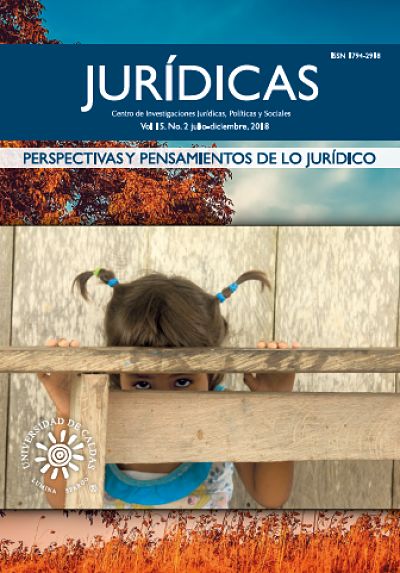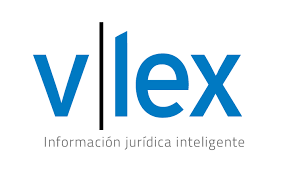Authors
Abstract
In this work two objectives are proposed: to explain how novelty, as a requirement for obtaining a patent, hinders the realization of open science regarding communication and use; and to determine the incentives that lead the industry to opt for open science in the proposed terms, leaving patenting aside. To achieve these objectives, the legaleconomic arguments that lead to consider the patent as an incentive for techno-scientific development, and how the “network effect” is restricted by those arguments, will be presented first. Secondly, the grace period is analyzed as an exception that prevents the disclosure of the invention, prior to the application for a patent, from destroying the novelty. Finally, the way the industry welcomes and encourages free software, a paradigmatic case of open science, is studied by identifying that the “network effect” generates a higher usefulness than other strategies of scientific production.
Keywords
References
AIPPI . (2013). Informe de Síntesis de la Cuestión 233, Periodo de Gracia para Patentes. Recuperado de https://aippi.org/wp-content/uploads/committees/233/SR233Spanish.pdf.
Arrow, K. (1962). Economic Welfare and the Allocation of Resources for Invention. The Rate and Direction of Inventive Activity: Economic and Social Factors. Princeton University Press.
de Beer, J. & Jain, V. (2018). Inclusive Innovation in Biohacker Spaces: The Role of Systems and Networks. Technology Innovation Management Review, 8 (2), 27.
Blumenthal, D., Campbell, E.G., Anderson, M.S., Causino, N. & Louis, K.S. (1997). Withholding research results in academic life science: evidence from a national survey of faculty. Jama, 277 (15), 1224-1228.
Blumenthal, D., Campbell, E.G., Gokhale, M., Yucel, R., Clarridge, B., Hilgartner, S. & Holtzman, N.A. (2006). Data withholding in genetics and the other life sciences: prevalences and predictors. Academic Medicine, 81 (2), 137-145.
Boldrin, M. & Levine, D.K. (2008). Against Intellectual Monopoly. Cambridge University Press. Botana Agra, M. (2013). Invenciones Patentables. En C. Fernández Novoa., J. M. Otero Lastres y M.
Botana Agra (Eds.), Manual de la Propiedad Industrial (pp. 113-143). Madrid, España: Marcial Pons.
Campbell, E.G., Clarridge, B.R., Gokhale, M., Birenbaum, L., Hilgartner, S., Holtzman, N.A. & Blumenthal, D. (2002). Data withholding in academic genetics: evidence from a national survey. Jama, 287(4), 473-480.
Comisión Europea. (2016). Open Innovation, open science, open to the world: a vision for Europe. Brussels: European Commission, Directorate-General for Research and Innovation.
Di Cola, P. (2013). Money from Music: Survey Evidence on Musicians’ Revenue and Lessons About Copyright Incentives. Arizona Law Review, 55 (2), 301-370.
Drahos, P. (2010). The global governance of knowledge: patent offices and their clients. UK: Cambridge University Press.
European Patent Office (EPO). (2015). Introducing a grace period in Europe? EPO. Economic and Scientific Advisory Board.
Fecher, B. & Friesike, S. (2014). Open science: One term, five schools of thought. In Opening science (pp. 17-47). Springer, Cham.
Fei, X. & Wang, J. (2016). Life Science Innovation in China. National Bureau of Asian Research, 56, 1-22.
Feldman, R. (2009). Plain Language Patents. Texas Intellectual Property Law Journal 17, 289-304.
Franzoni, C. & Scellato, G. (2010). The grace period in international patent law and its effect on the timing of disclosure. Research Policy, 39, 200-213.
Gans, J.S., Murray, F.E. & Stern, S. (2013). Contracting over the disclosure of scientific knowledge: Intellectual property and academic publication (No. w19560). National Bureau of Economic Research.
Graham, S. & Hegde, D. (2015). Disclosing patents’ secrets. Science, 347(6219), 236-237.
Grimmelmann, J. (2010). The Internet is a semicommons. Fordham Law Review, 78(6), 2799-2842.
Gupta, G., Nowatzki, T, Gangadhar, V. & Sankaralingam, K. (2017). Kickstarting Semmiconductor Innovation with Open Source Hardware. IEEE Computer Society, 50(6), 50-59.
Joachim, J. (2015). Is the AIA the End of Grace: Examining the Effect of the America Invents Act on the Patent Grace Period. New York University Law Review, 90, 1293-1330.
Katz, M.L. & Shapiro, C. (1985). Network Externalities, Competition, and Compatibility. The American Economic Review, 75(3)
Katz, M.L. & Shapiro, C. (1994). Systems Competition and Network Effects. Journal of Economic Perspectives, 8(2).
Kim, T. & Shin, D. (2016). Social platform innovation of open source hardware in South Korea. Telematics and Informatics, 33, 217-226.
Landes, W.M. & Posner, R.A. (2004). The political economy of intellectual property law. American Enterprise Institute.
Lemley, M.A. (2012). The myth of the sole inventor. Michigan Law Review, 709-760.
Leydesdorff, L. & Meyer, M. (2010). The decline of university patenting and the end of the Bayh—Dole effect. Scientometrics, 83(2), 355-362.
Liu, G. (2013). Visualization of patents and papers in terahertz technology: a comparative study. Scientometrics, 94 (3), 1037-1056.
Lock, J. (2013). Open Source Hardware. Can embedded electronics companies thrive through the use and/or development of open source hardware? Master’s Thesis Dissertation, Chalmers University of Technology.
Merges, R.P. (2012). Priority and Novelty under the AIA. Berkeley Technology Law Journal, 27(2), 1023-1046.
Merton, R.K. (1973). The sociology of science: Theoretical and empirical investigations. University of Chicago Press.
Nagaoka, S. & Nishimura, Y. (2015). Use of Grace Periods and Their Impact on Knowledge Flow: Evidence from Japan. RIETI Discussion Pape Series, 15-E-072.
Pearce, J.M. (2016). Return on investment for open source scientific hardware development. Science and Public Policy, 43(2), 192-195.
Pénin, J. (2009). On the consequences of university patenting: What can we learn by asking directly to academic inventors? (No. 2009-04). Bureau d’Economie Théorique et Appliquée, UDS, Strasbourg.
Ramos Toledano, J. (2017b). Vivir del arte. mientrastanto.org. Recuperado de http://www.mientrastanto. org/boletin-155/notas/vivir-del-arte.
Stallman, R. (2004). Software libre para una sociedad libre. Madrid: Traficantes de Sueños. Stiglitz, J. (1999). Knowledge as a Global Public Good. En Kaul, I., Grunberg, I. & Stern, Marc A. (Ed.) Global Public Goods. New York: Oxford University Press.
Stiglitz, J. (2008). Economic Foundations of Intellectual Property Rights. Duke Law Journal, 57, 1693-1724.
Sun, Y. (2003). Determinants of foreign patents in China. World Patent Information, 25(1), 27-37.
Tegernsee Group, DKPTO, BMJV/DPMA, EPO, INPI, JPO, UK IPO, USPTO (2014). Consolidated Report on the Tegernsee User Consultation on Substantive Patent Law armonization.
Tessensohn, J. & Yamamoto, S. (2007). Japan’s novelty grace period solves the dilemma of ‘publish and perish’. Nature Biotechnology, 25(1), 55-57.
The Linux Foundation (2016). Linux Kernel Development. How Fast It is Going, Who is Doing It, What They Are Doing and Who is Sponsoring the Work.
Walsh, J.P. & Huang, H. (2014). Local context, academic entrepreneurship and open science: Publication secrecy and commercial activity among Japanese and US cientists. Research Policy, 43(2), 245-260.
Yoo, C. (2015). Moore’s Law, Metcalfe’s Law, and the Theory of Optimal Interoperability. Faculty Scolarship Paper, 1651, 87-102.

 PDF (Español)
PDF (Español)
 FLIP
FLIP


























